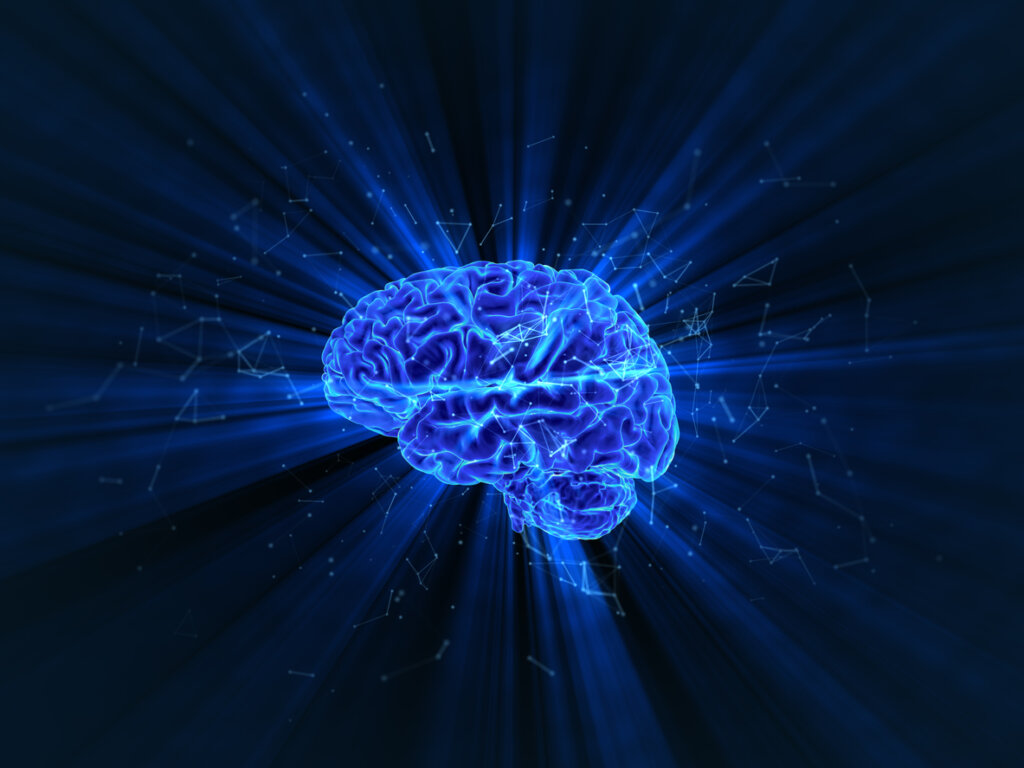Our Neural Architecture of Intelligence and How to Strengthen It


Written and verified by the psychologist Valeria Sabater
What do you think the brain of someone brilliant and with high potential is like? Many believe that these people have more gray matter. However, the theory of the neural architecture of intelligence claims that the most effective minds are, in fact, more plastic. This means they have a great capacity to reconfigure themselves in the face of new information.
Flexibility, connectivity, plasticity, and the ability to update beliefs and thought patterns. These are the real keys to intelligent reasoning. To understand it, try and visualize for a moment how the brain works. Imagine a large forest. All its branches are interconnected and the more connections there are, the more beautiful and powerful the territory will be.
In the past, it was taken for granted that intelligence was located exclusively in regions such as the prefrontal cortex. Nevertheless, we now know that there’s no specific place or network where we carry out our analyses and resolutions.
“Someone’s intelligence can be measured by the quantity of uncertainties that he can bear.”
-Immanuel Kant-

The neural architecture of intelligence
Although understanding the neurological mechanisms of intelligence is a complex goal, defining it is less so. It involves our ability to solve problems. In fact, it’s the mental faculty that allows us to understand reality and make decisions in tune with each situation or challenge that we come up against.
It means thinking abstractly, but also relating data to our experience and even understanding complex ideas. The theory of multiple intelligences doesn’t fit here. That’s because, from a neurological point of view, there’s only one intelligent behavior. That’s the one by which our brain allows us to adapt to our environment in an effective way by overcoming obstacles.
It’s this ability that’s made it easier for us to place ourselves above the rest of living beings and to be, so to speak, a complete biological success. However, how did we achieve it? How does our brain shape such effective cognitive processes?
For some time now, science has attempted to understand the nature and mechanisms of intelligence. Its objective is none other than to create a more advanced artificial intelligence. Also, to design more useful educational programs, as well as gain a deeper understanding of everything from diseases to neuropsychiatric disorders.
Neuroplasticity is key
Brain neuroplasticity is what allows us to modify our habits or predetermined knowledge to create new neurological connections when learning or developing new skills. A ‘plastic’ brain is a brain that modifies itself based on each experience. It updates itself, generating new networks and new routes of thought.
The neuronal activity of intelligence will always start from the principles of flexibility and continuous transformation. Only when we’re able to update our knowledge, discarding what’s no longer useful to develop new concepts and approaches, do we build an effective, skillful, and intelligent mind.
Fluid intelligence and crystallized intelligence: networks that build our cognitive competence
Raymond Cattell provided a valuable theory that, to this day, remains completely valid. Indeed, his concepts of fluid intelligence (Gf) and crystallized intelligence (Gc) are basic to the world of neuroscience.
- The first (Gf), refers to those mental operations that we use to solve novel problems without any prior knowledge.
- The second, (Gc) is nourished by our culture, education, and previous experiences. It’s the one we apply to solve family problems.
A study conducted by the neuroscience laboratory at the University of Illinois claims that the neural architecture of intelligence governs both processes.
Crystallized intelligence makes use of neural networks that work automatically, recognizing patterns and relating them exclusively to our previous knowledge. On the other hand, fluid intelligence uses more dynamic, plastic, and adaptive neural networks. Its activity is more complex since it’s not based exclusively on what’s already been learned. Therefore, it makes use of multiple brain regions.
Both the neurological networks that make up crystallized intelligence and those that drive and build fluid intelligence (more flexible and dynamic) build general intelligence.
The neural architecture of intelligence claims that efficient brains are brighter
What exactly do we mean when we talk about brains or ‘brilliant minds’? Here, the neural architecture of intelligence approach is extremely useful, for several reasons.
Firstly, it’s because this theory tells us that the human brain is designed for efficiency. In other words, to respond quickly to any stimulus, problem, circumstance and challenge.
Secondly, the brain works as a whole. Indeed, intelligence doesn’t only reside in one area like the prefrontal regions, for example. As a matter of fact, we use multiple neural networks, those that orchestrate both fluid and crystallized intelligence processes.

How to become smarter
You can improve your mental functions through learning and cognitive stimulation or exercise. However, that won’t suddenly give you a higher IQ (intelligence quotient). For instance, you must bear in mind that fluid intelligence almost always has a genetic component. For its part, crystallized intelligence never expires and can expand.
How can you expand it? By doing mental gymnastics. By training your memory, mathematical abilities, attention, and reflection. Also, by learning languages, playing musical instruments, socializing, and reading. Finally, by always maintaining a critical and curious attitude toward life and everything that surrounds you.
Remember that your brain has a plastic quality. This means that it’s a good idea to learn new things and above all, to mediate your well-being and happiness. There’s no need to formulate a new quantum string theory. It’s enough to simply be more skillful in solving your day-to-day difficulties.
All cited sources were thoroughly reviewed by our team to ensure their quality, reliability, currency, and validity. The bibliography of this article was considered reliable and of academic or scientific accuracy.
- Barbey, A. K. (2018). Network neuroscience theory of human intelligence. Trends in Cognitive Sciences, 22, 8-20.
- Barbey, A. K., Colom, R., Solomon, J., Krueger, F., Forbes, C., & Grafman, J. (2012). An integrative architecture for general intelligence and executive function revealed by lesion mapping. Brain, 135, 1154-1164.
- McDaniel, M. A. (2005). Big-brained people are smarter: A meta-analysis of the relationship between in vivo brain volume and intelligence. Intelligence, 33(4), 337-346.
This text is provided for informational purposes only and does not replace consultation with a professional. If in doubt, consult your specialist.








